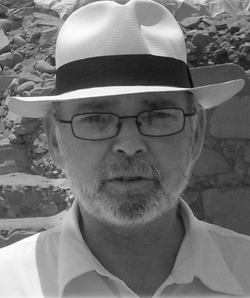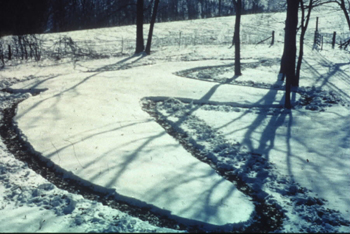Posted 7:58 p.m. Monday, Feb. 6, 2012

 [/caption]
[/caption]
Awards ceremony to honor lead archaeologists
About 1,000 years ago Native Americans built more animal-shaped mounds in Wisconsin than any other part of the world. Many are still intact — even in the La Crosse area. The mounds are so common in the state, people don’t realize their significance or rarity in the world, says Robert Birmingham, former state archaeologist and professor at UW-Waukesha. Birmingham will present on these mounds — called effigy mounds — at 7 p.m. Thursday, Feb. 16, in Port O' Call, Cartwright Center-Gunning Addition. During the Late Woodland Period, 700 A.D. – 1,100 A.D., native people built more than 15,000 mounds in Wisconsin. Thousands were in the form of super natural beings and animals such as birds, bear, deer, bison, lynx, turtle, panther or water spirit. Comparable to churches or temples, they were sacred spaces where, at times, the dead were buried, explains Birmingham. Most of the mounds built were destroyed as settlers moved in and started farming. However, preserved mounds can be visited at nearby locations such as La Crosse’s Myrick Park, Trempealeau’s [caption id="attachment_9511" align="alignright" width="350" caption="Bird effigy mound. Photo courtesy of National Park Service, Effigy Mounds National Monument."] [/caption]Perrot State Park, Wyalusing State Park in Bagley, Wis. and Effigy Mounds National Monument in Harpers Ferry, Iowa.
A large number of mounds have been well preserved and recorded in the Dane County area. Birmingham uses the county as a case study in how the mounds reflect the landscapes where they are built. For instance, water spirit-shaped mounds were built near natural springs and lowland areas while thunderbird-shaped mounds were built in elevated areas. The mounds help archaeologists better understand the Woodland society and how societies have evolved, he says.
“The Woodland people were thought to be simple hunters and gatherers who came to build these mounds. The mounds say otherwise,” says Birmingham. “These are obviously the work of a complex society.”
Birmingham wrote the book, “Spirits of Earth: The Effigy Mound Landscape of Madison and the Four Lakes.”
If you go—
What: Lecture on Wisconsin mounds
Where: Port O' Call, UW-L’s Cartwright Center,
When: 7 p.m. Thursday, Feb. 16
Admission: Free
[/caption]Perrot State Park, Wyalusing State Park in Bagley, Wis. and Effigy Mounds National Monument in Harpers Ferry, Iowa.
A large number of mounds have been well preserved and recorded in the Dane County area. Birmingham uses the county as a case study in how the mounds reflect the landscapes where they are built. For instance, water spirit-shaped mounds were built near natural springs and lowland areas while thunderbird-shaped mounds were built in elevated areas. The mounds help archaeologists better understand the Woodland society and how societies have evolved, he says.
“The Woodland people were thought to be simple hunters and gatherers who came to build these mounds. The mounds say otherwise,” says Birmingham. “These are obviously the work of a complex society.”
Birmingham wrote the book, “Spirits of Earth: The Effigy Mound Landscape of Madison and the Four Lakes.”
If you go—
What: Lecture on Wisconsin mounds
Where: Port O' Call, UW-L’s Cartwright Center,
When: 7 p.m. Thursday, Feb. 16
Admission: Free
